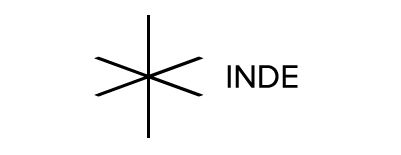Why it’s time for Museums to embrace the scary, glary For-Profit world of advertising
Over the past four years we have had the pleasure to work across a multitude of industries in some of the most amazing countries on earth. From schools in Mongolia to the biggest drinks brands via the greatest museums on all four corners of the planet it’s helped us to learn more about the interconnection or lack of between industries that should know more about each other. In the first of a two part article we look at what museums and educational institutions can learn from an industry that accesses the minds of everyone on the planet, 24 hours a day.
Focus on Engagement and Retention First
Advertising is all about generating then holding attention long enough to communicate. Those who cannot generate and then hold attention are left with a great message that no one ever heard - screaming alone in the woods. One of the greatest men to ever grace the advertising industry, David Ogilvy once said: “"If you don't get noticed, you don't have anything. You have to be noticed, but the art is in getting noticed naturally, without screaming or without tricks.”.
Engagement of an increasingly disinterested and cynical public is becoming the great art of the modern age. It is a problem that permeates TV, theatre, advertising and everything in-between. Yet in this time of Snapchat, Twitter et al, savvy advertisers spend many hours investigating their target audience’s consumption habits and look to shape their content, message and delivery mechanism to fit the space that drives maximum attention from their audience. Great advertising understands that audiences owe them nothing and that the onus is on them to bend to the will of the public.
Embrace “Risky” Technology Early and Learn to fail
From its very inception advertising has explored new technologies or mediums with frightening abandon. Video, SMS, apps, VR, AR, experiential, guerrilla, flowers and even the back of bald heads… it’s all been used effectively by brands to communicate with their target audience. Great advertisers are trend-setters, innovators, often years ahead as tech adopters. Risk we hear you cry? What about the risk that it breaks or doesn’t work the way we imagined? Risk is continuing to promote your product or get your message across using a medium no one uses or will be defunct in 6 months. Risk is not evolving alongside your audience at a sufficient rate to maintain their attention. Advertisers jump into technology with both feet because their job is to capture the imagination.
Understand the Importance of Brand
Brands allow quick communication without complication. Brands exist to simplify people’s understanding of what a product represents and the dream it offers. Advertisers use them because they understand that people are incredibly busy and have increasingly shortened attention spans. Ogilvy understood his audience more than anyone else because he never assumed that people were willing to spend time with him and valued every interaction as if it was their last: “On the average, five time as many people read the headline as read the body copy. When you have written your headline you’ve already spent eighty cents of your dollar.”. Creating memorable visuals, taglines and more to sell great educational content is not selling out, it’s making it more likely to seen by your audience.
